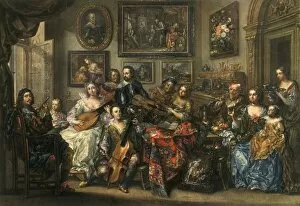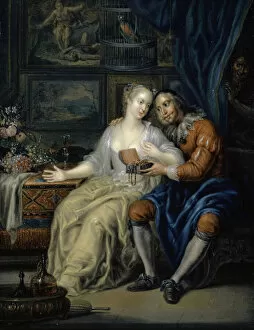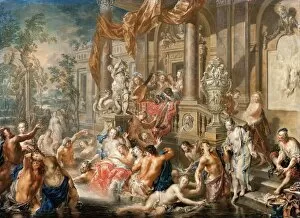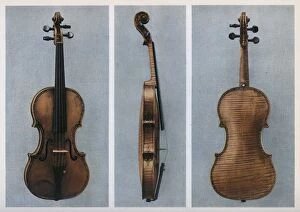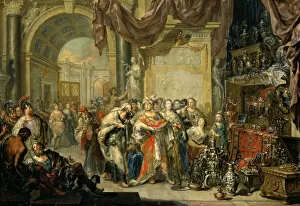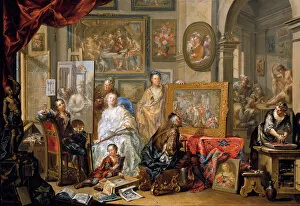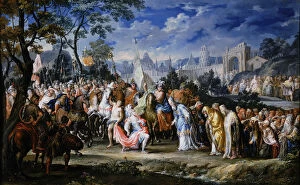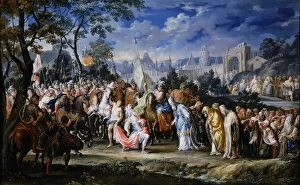Platzer Collection
Johann Georg Platzer (1704-1761) was a renowned artist known for his exquisite paintings and attention to detail
For sale as Licensed Images
Choose your image, Select your licence and Download the media
Johann Georg Platzer (1704-1761) was a renowned artist known for his exquisite paintings and attention to detail. His works encompassed various themes, from biblical scenes to allegories and portraits. In "The Marriage at Cana, " he captured the joyous celebration with vibrant colors and intricate brushwork. Similarly, in "The Feeding of the Five Thousand, " Platzer depicted the miraculous event with great skill, emphasizing the multitude of people gathered around Jesus. One of his notable pieces is "An Allegory of the Visual Arts, " an oil painting on metal that showcases Platzer's mastery in portraying different art forms such as flute, lute, cello, and violin. The composition exudes harmony and elegance while paying homage to these musical instruments. Platzer's talent extended beyond religious subjects; he also excelled in capturing everyday life moments like in "Couple with Matchmaker. " This charming piece portrays a couple seeking love under the guidance of a matchmaker, reflecting societal norms during that era. In his self-portrait from 1731, we catch a glimpse into Platzer's own persona as an artist. With confident brushstrokes and intense gaze, he reveals his dedication to his craft. Platzer's versatility shines through in works like "Dancing scene with palace interior" and "Fountain scene in front of a palace. " These lively compositions transport us to opulent settings filled with merriment and grandeur. Not limited to painting alone, Platzer even ventured into other artistic realms by creating detailed depictions of violins crafted by Nicola Amati from Cremona during the seventeenth century. Through this work, he showcased his appreciation for both visual arts and music. Furthermore, some historical narratives were brought to life through Platzer's artistry.

